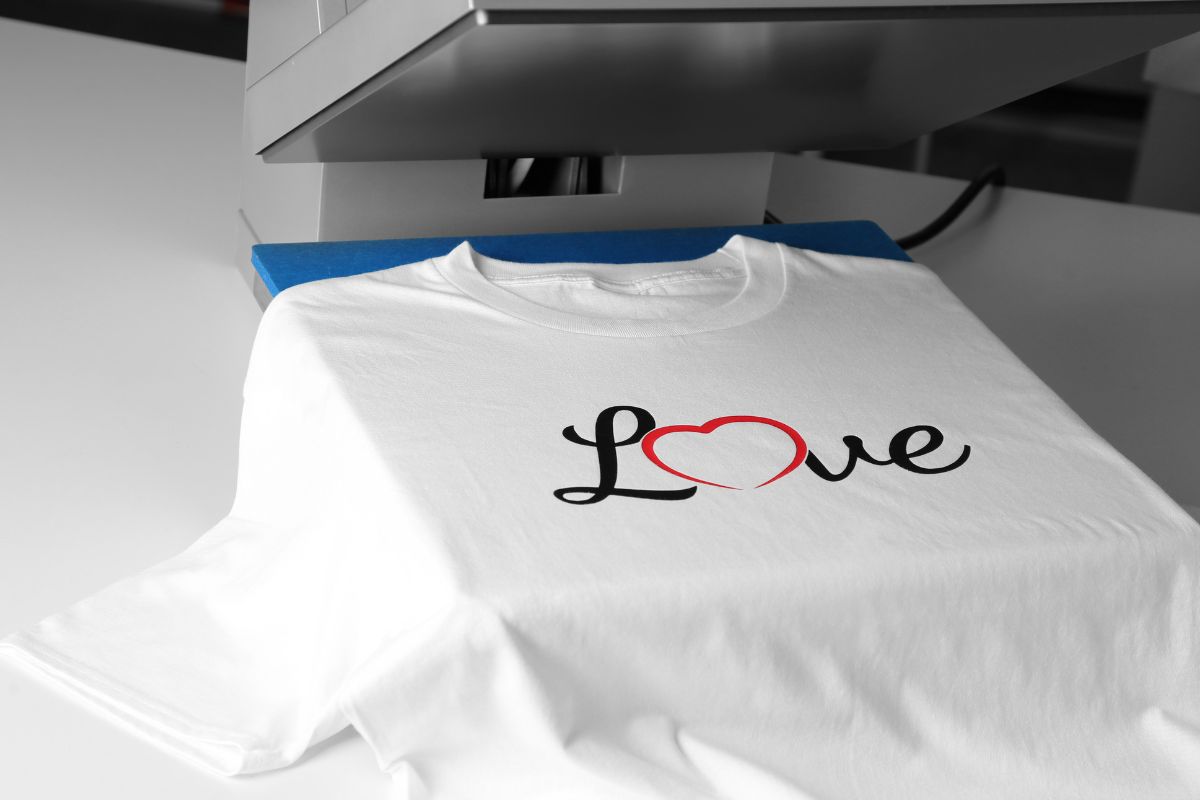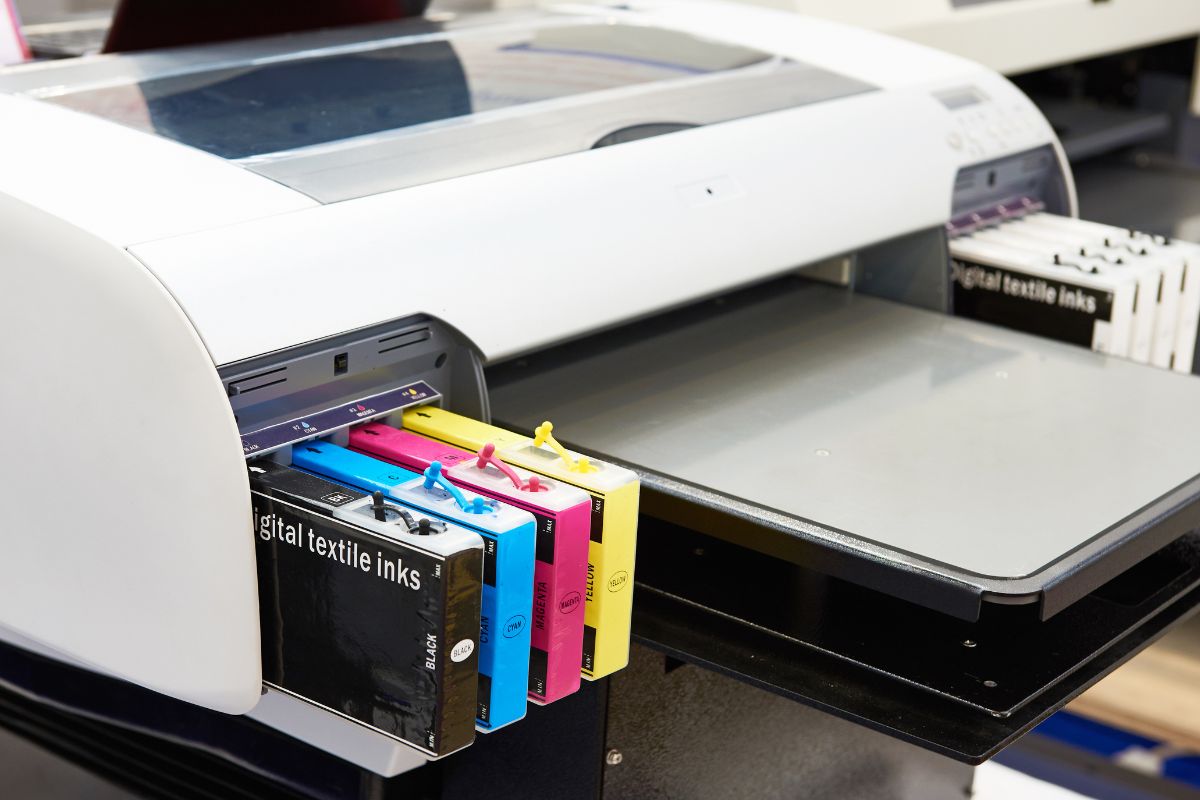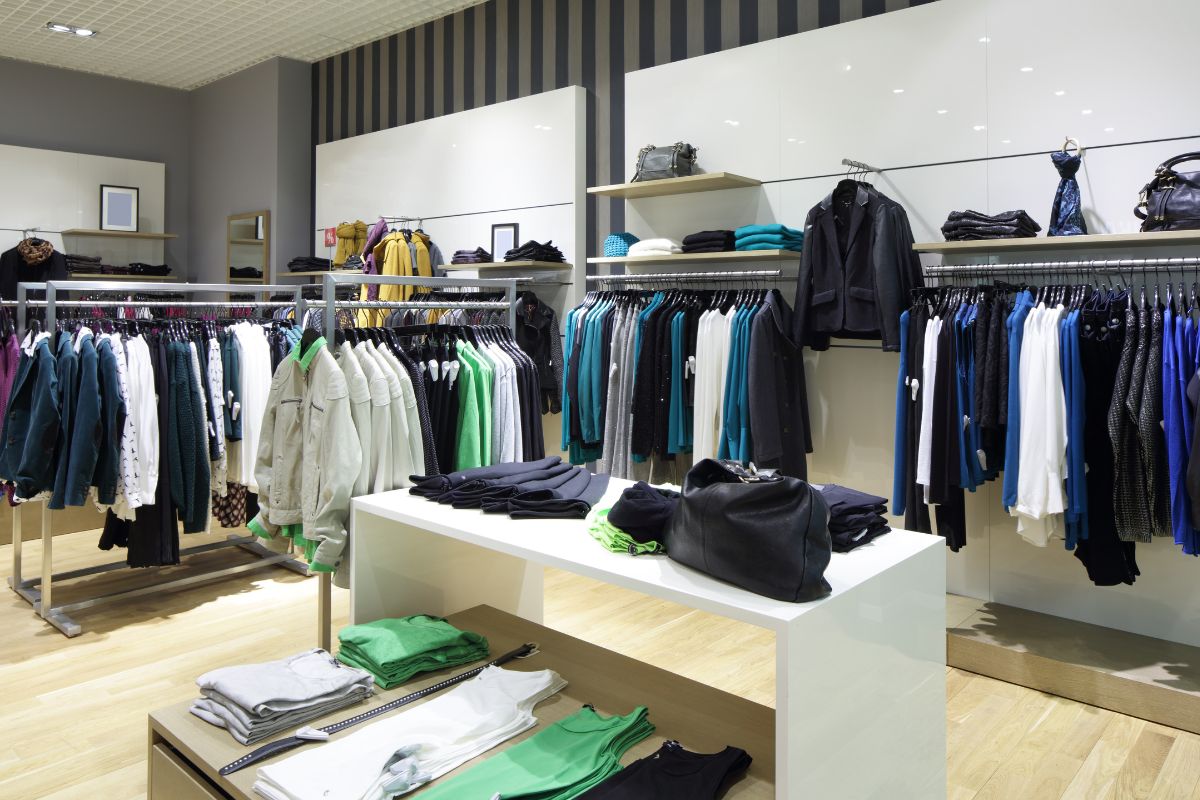Creating a shirt, especially a t-shirt, is both an art and a science, blending creativity with technique. To make your owncustom t-shirt, you’ll need a clear design in mind and access to some basic materials, including fabric, a pattern, sewing equipment, and perhaps specialized ink or paint for personalization. Whether you’re aiming to express your individual style, craft personalized t-shirts for an event, or even start your own line of custom tees, the process begins with your unique vision.
The journey from concept to finished product involves several key steps: selecting the right fabric, cutting it to match a t-shirt pattern, and assembling the pieces using a sewing machine or hand-stitching methods. Customizing your t-shirt goes beyond the construction—it’s about making it truly yours. This could involve screen printing, hand-painting, or applying heat-transfer designs. By refining these techniques, you can ensure that your personalized t-shirts stand out with professional quality and personal flair.
Remember, creating a t-shirt isn’t just about following a set of instructions; it’s about putting your personal touch on every step. Paying attention to detail, from the fit and comfort to the durability of the design, is crucial. With some practice and patience, you can craft a t-shirt that reflects your style and lasts for years to come.
Understanding T-Shirt Design
Creating the perfect t-shirt involves a blend of design creativity, material choice, and understanding fit to ensure style and comfort. Each element, from selecting the right fabric to the fitting process, plays a pivotal role in the final product’s appeal and feel.
Design Fundamentals
Your t-shirt’s design is critical; it communicates your style and message. Begin with a clear concept, then move to your design elements. Colors and text are core components, as they grab attention and convey your theme. Utilize contrasting colors for legibility and coherence in your design. When it comes to fonts, choose those that enhance readability and complement the shirt’s overall aesthetic. For a harmonious design, ensure balance between text, imagery, and blank space.
Consider design makers or software that suit your skill level and design needs. With the right tools, you can articulate your vision onto the t-shirt more effectively.
Choosing the Right Fabric
Selecting your t-shirt’s fabric is just as important as the visual design. Your choice influences the feel and comfort of the shirt. Common t-shirt materials include cotton, polyester, and blends. Cotton is cherished for its softness and breathability, making it ideal for everyday wear. Polyester, on the other hand, offers durability and moisture-wicking properties, suitable for active use. Blended fabrics attempt to combine the best of both worlds.
Remember, the fabric also impacts the printing process; some materials hold colors and detailed designs better than others.
Selecting Sizes and Fit
Proper fit is essential to ensure your t-shirt is comfortable and flattering. A size guide can be an invaluable tool for determining the right fit for different body types. When considering sizes, think about the target demographic and the style you aim to achieve.
Patterns vary from slim, regular, to loose-fit; slim-fit may accentuate the body’s shape, while loose-fit ensures greater ease of movement. Always check the manufacturer’s sizing metrics as these can differ across brands.
Remember to account for fabric shrinkage which may affect the fit after washing. Keep these considerations in mind to ensure that the style and comfort of your t-shirt design meet your expectations.
Creating Your T-Shirt
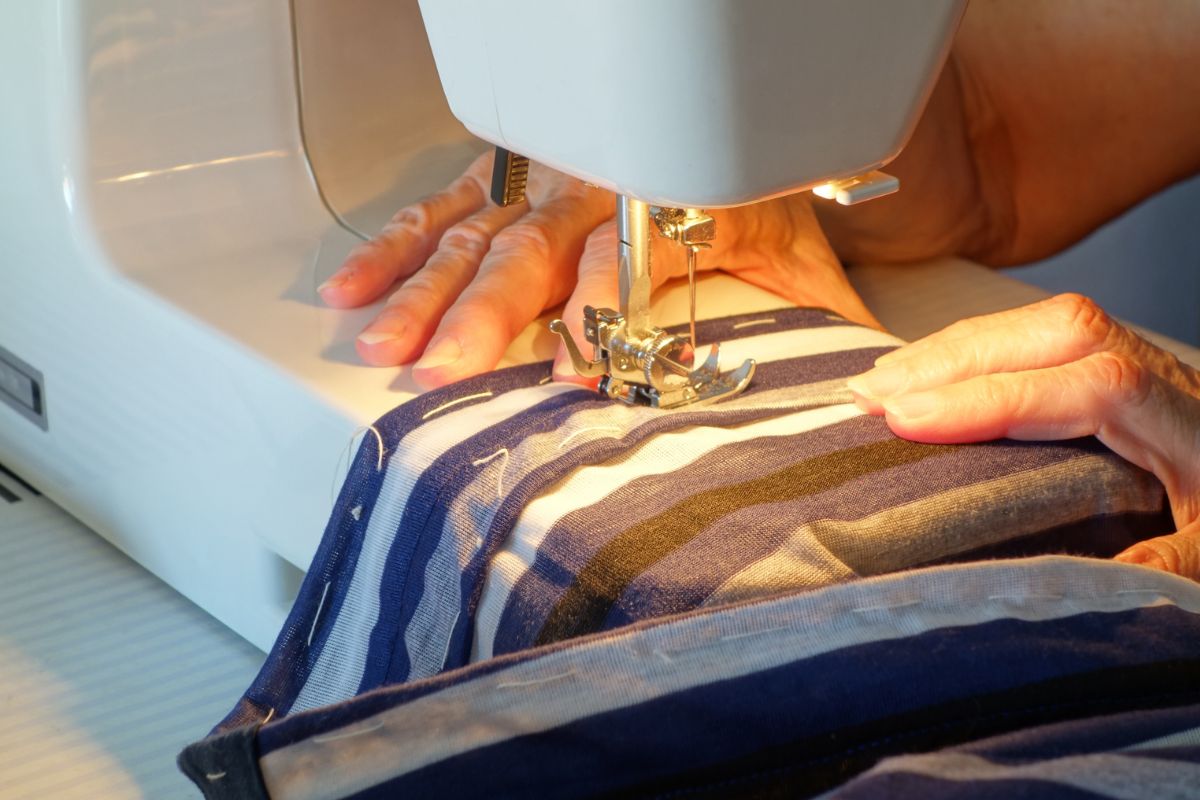
When you decide to create your own T-shirt, you embark on a journey that combines creativity with technical skill. First, you’ll design a unique graphic or pattern that represents your personal style. Following that, you’ll master the fundamental cutting and sewing techniques to assemble your T-shirt.
Designing Your T-Shirt
To kick off your T-shirt design, choose a concept that resonates with you. Whether you’re looking to craft personalized T-shirts for an event, or simply express your creativity, the design stage is where you set your vision in motion. Start by selecting a pattern or theme for your shirt design. Employ tools like Canva to piece together high-resolution images, fonts, and text. Don’t forget that your design must be translated onto fabric, so create a mockup to visualize the final look.
- Templates: Leverage a variety of templates to get a head start on your T-shirt design ideas.
- Customization: Add your personal touch by integrating unique design elements and customizing the look of your sleeves and shoulders.
Cutting and Sewing Techniques
Once your design is set, it’s time to bring it to life. Begin with a proper pattern that matches your measurements and desired style. Transfer this pattern onto the chosen fabric using tailor’s chalk or a fabric marker. Cutting the fabric requires precision – a sharp pair of scissors or a rotary cutter is essential for clean edges.
- Sewing: Assemble the pieces using a sewing machine equipped with a straight stitch and, if needed, a zigzag stitch for stretchable fabrics.
- Sleeves & Shoulders: Attach the sleeves carefully, aligning the seams at the shoulders with accuracy for a professional look.
The creation of your T-shirt blends imaginative design with the tangible skills of cutting and sewing. Through this process, you’ll achieve a garment that’s uniquely yours, pieced together by your own hands.
Printing and Customization Options
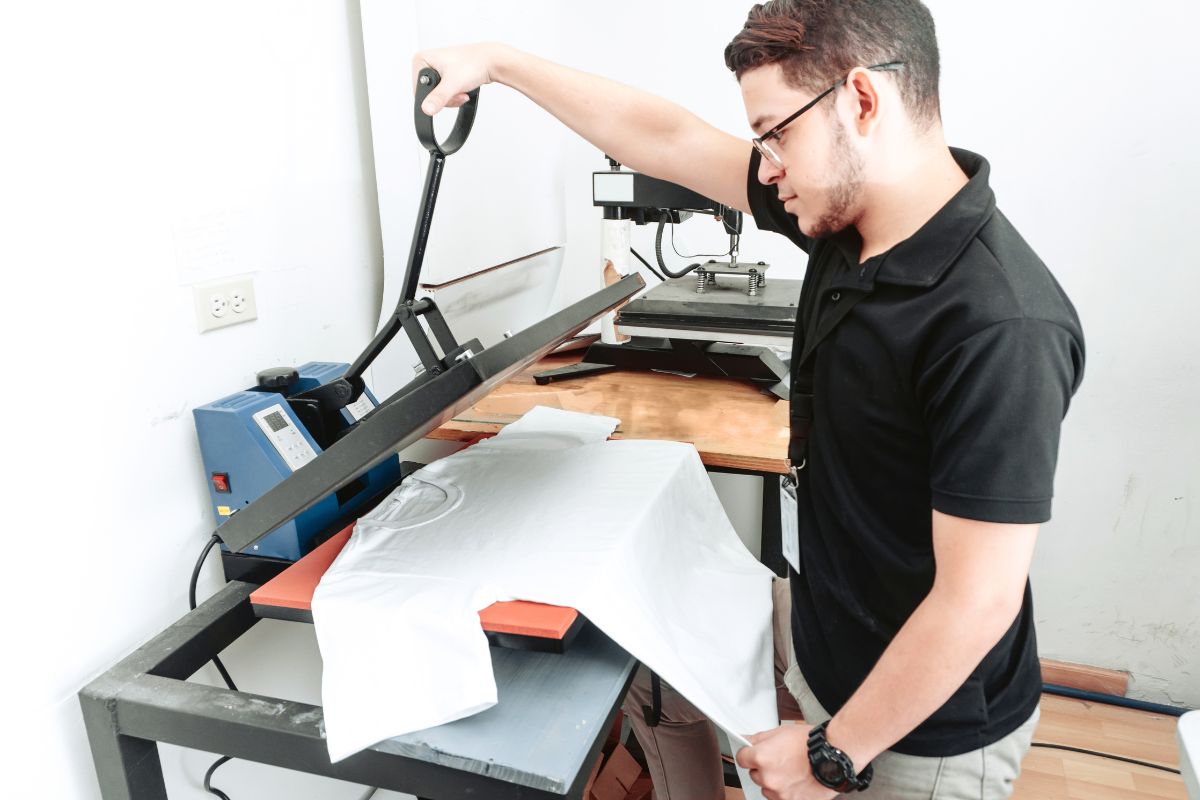
When you decide to create a custom t-shirt, you have a range of printing and customization options at your disposal. Each method offers unique benefits, whether you’re looking to produce a one-off design or a large batch for an event.
Screen Printing Methods
Screen Printing is a classic choice for high-volume t-shirt printing, ideal for designs that use limited colors. In screen printing, separate screens are created for each color in your design, and ink is applied through these screens onto the shirt. This process ensures vibrant colors and is cost-effective for larger quantities. It’s suitable for designs on both the front and back of a t-shirt, and can incorporate ink types that give texture or shine, enhancing the tactile experience of your customized product.
Preparing Your Design:
- Ensure simplicity – Screen printing handles simple designs and a few colors best.
- Consider location – Standard print areas include front, back, and sleeves.
Benefits:
- Durable and long-lasting print quality.
- Ideal for bulk orders, reducing overall cost.
Digital Printing and DTG
Direct-to-Garment (DTG) or digital printing offers a solution for intricate designs with a wide color palette, perfect for personalized shirts. This method works much like a regular printer, applying ink directly onto the t-shirt which allows for detailed images or patterns. DTG is superb for short runs or no minimum order quantities and is also a quick way to produce a shirt with an upload of your own image through a custom t-shirt maker like Canva Print.
Optimizing Your Artwork:
- High resolution – Ensure images are high-quality for clear, sharp prints.
- Color spectrum – Take advantage of the ability to use many colors without added cost.
Advantages:
- No setup fees, making it affordable for small orders.
- Enables full-color printing with detail that screen printing might not achieve.
Marketing Your Custom T-Shirts
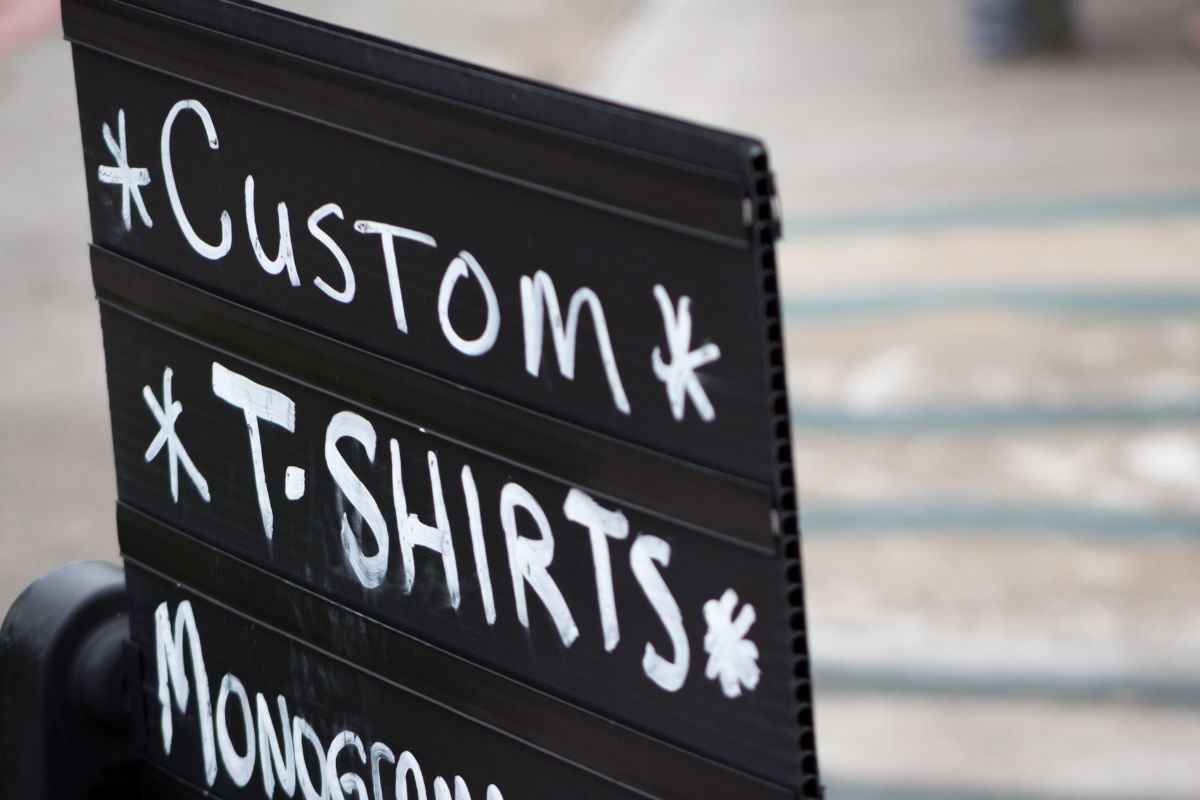
Successfully marketing your custom T-shirts involves establishing a robust online presence and employing powerful promotional strategies to attract and retain customers.
Setting Up Online Sales
To launch your online sales, choosing the right e-commerce platforms is crucial. Shopify is a user-friendly option that allows for customization and integration of various APIs. This platform makes it easy to upload your T-shirt designs and manage inventory. Similarly, Etsy is an excellent marketplace for unique and custom items, and it will enable you to reach a niche audience interested in bespoke products.
Walmart and eBay also extend their platforms to individual sellers. By listing your custom T-shirts on these marketplaces, you tap into their vast customer bases. However, differentiation is key here due to the high level of competition.
When setting up your online shop, make sure that you provide comprehensive t-shirt resources to assist customers in making their choices. This may include size charts, design options, or tools to make your own shirt. Additionally, ensuring that worldwide shipping is available and that returns are made easy will place you ahead of competitors who limit their sales to specific regions or have complex return policies.
- Considerations for Online Sales Setup:
- Choose an e-commerce platform that aligns with your brand (e.g., Shopify, Etsy).
- Make use of APIs for streamlined operations.
- Offer detailed resources to help customers with their purchases.
- Ensure worldwide shipping options are clear and accessible.
- Have a straightforward return policy to build customer trust.
Promotional Strategies
Developing effective promotional strategies is essential to drive traffic and sales. Utilize social media platforms to showcase your custom T-shirts and connect with your target audience. Regular posting of high-quality images and engaging content can generate interest and lead to word-of-mouth referrals.
In addition, consider using targeted ads to reach a broader audience. Platforms like Facebook and Google offer tools for creating targeted campaigns that can increase your visibility significantly.
- Key Promotional Tactics:
- Engage with your audience through social media (e.g., Instagram, Facebook).
- Run targeted ad campaigns to capture relevant traffic.
- Offer promotions or discounts to first-time buyers.
- Employ email marketing to keep your brand top-of-mind.
Implementing these sales and promotional strategies will help you build a loyal customer base and grow your custom T-shirt business.
Caring For Your T-Shirt

Proper care can significantly extend the life of your t-shirt and maintain its appearance. Follow these guidelines to keep your favorite tees looking their best.
Washing and Ironing Tips
When washing your t-shirt, turn it inside out to protect the outer surface. This is especially important for tees with printed designs. Use cold water to prevent shrinkage and set the washing machine to a gentle cycle. For drying, it’s best to air dry your tee to maintain its shape and fabric integrity. If you must use a dryer, choose a low heat setting.
When it comes to ironing, always check the label for the recommended temperature. If your t-shirt has prints, iron on the reverse side to avoid damage. For t-shirts without prints, use a thin cloth as a barrier between the iron and the fabric to prevent potential scorching.
- Washing:
- Turn t-shirt inside out
- Use cold water and gentle cycle
- Air dry when possible, or use low heat in dryer
- Ironing:
- Check label for temperature recommendations
- Iron prints on the reverse side
- Use a thin cloth as a barrier for non-printed areas
Maintaining Print Quality
To maintain the quality of your t-shirt’s print, avoid abrasive detergents and bleach, which can break down the ink and cause fading. If you’re using a washing machine, opt for a mild detergent that’s gentle on clothes. Hand washing is another great way to care for your printed t-shirts, ensuring that the print doesn’t crack or peel.
- Print Care:
- Avoid abrasive detergents and bleach
- Use mild detergent for machine or hand wash
- Be gentle to prevent cracking or peeling of the print
Remember to consult the manufacturer’s care instructions for specific recommendations on how to care for your t-shirt, as different t-shirt resources may require unique care methods.
Frequently Asked Questions
In this section, you’ll find concise answers to common questions about making a shirt, from selecting the right materials to sewing by hand and adding your own custom design.
What materials are needed to craft a homemade shirt?
To craft a homemade shirt, you’ll need fabric such as cotton or linen, sewing thread, needles, and scissors. Interfacing and buttons or zippers may be required depending on the design.
What is the process for sewing a shirt for beginners?
For beginners, the process of sewing a shirt typically starts with choosing a simple pattern, cutting the fabric accordingly, and learning basic stitches. Progress by sewing the pieces together, step by step, ensuring to follow the pattern’s instructions.
Can you guide me through creating a shirt pattern?
Creating a shirt pattern involves taking your measurements, drafting a basic template based on those measurements, and then adjusting the template for specific design details. Use a pattern making paper or software if you’re more tech-savvy.
What steps should I follow to sew a shirt by hand?
To sew a shirt by hand, begin by threading your needle and tying a knot. Start with the shoulders and side seams, using a backstitch for strength. Attach the sleeves, collar, and cuffs, finishing with hems and any fastenings like buttons.
How can I make a shirt featuring a custom image?
To make a shirt with a custom image, select a method such as screen printing, transfer paper, or direct-to-garment printing. Prepare your image, print it on the chosen medium, and apply it to the shirt based on the technique’s specific instructions.
What are some tips for drawing a shirt design for production?
When drawing a shirt design for production, maintain high-resolution images for clarity, use vector graphics if possible, and consider the limitations of your printing method. Ensure your design fits within the standard printable areas of a shirt.

